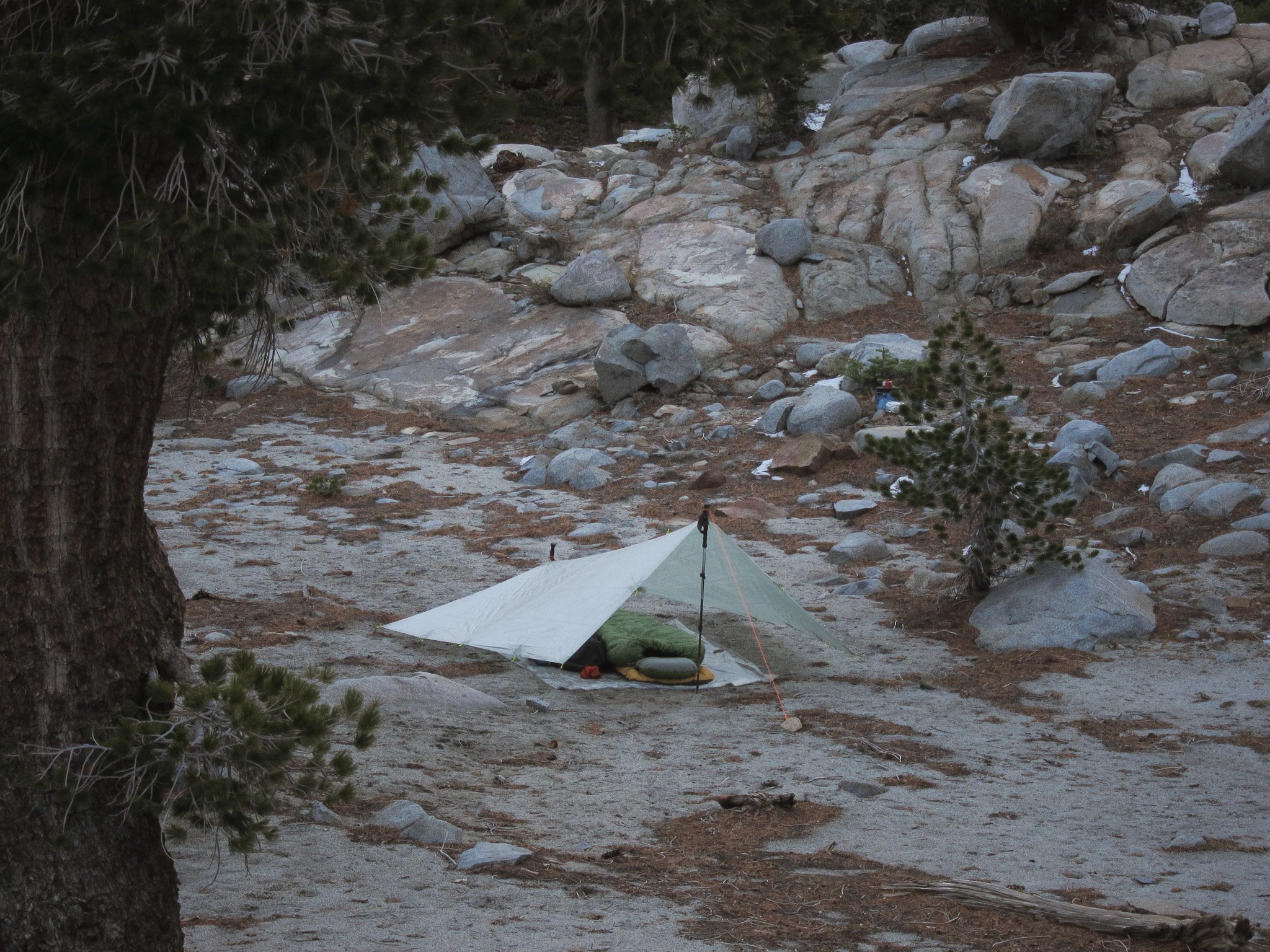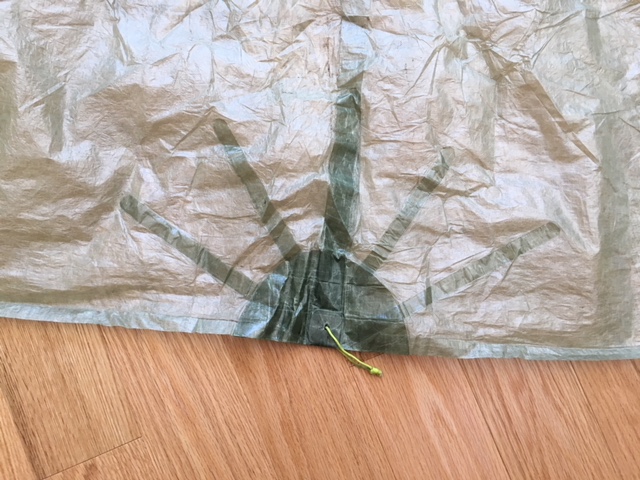Topic
Standard detail for a Dyneema ridge seam?
Forum Posting
A Membership is required to post in the forums. Login or become a member to post in the member forums!
Home › Forums › Gear Forums › Make Your Own Gear › Standard detail for a Dyneema ridge seam?
- This topic has 6 replies, 4 voices, and was last updated 5 years, 12 months ago by
 Ryan Smith.
Ryan Smith.
-
AuthorPosts
-
Apr 19, 2018 at 10:05 pm #3531429
So after being corrected in the post below, I did get an order in for my 0.51oz dyneema!
So here is how I was going to attack it, for the perimeter I was going to sew a simple folded seam, seems like this is how zpack and HH do it. I’d glue all the reinforcements, seems to be lots of coverage and details on this floating around.
My question is the ridge? I like the idea of a no-sew solution. I’m thinking a somewhat felled seam. I’d use double stick tape. First tape would tape together, second tape would be a fold. Do you think that is going to be enough? For belt and suspenders, I thought about using the cuben 1-inch tape for a third tape, so basically over the fold? But if this is not needed, don’t want to add the additional weight.
So what are other folks doing? Fairly expensive material, only want to do this once, LOL
Apr 19, 2018 at 10:12 pm #3531430Also, this will be a flat tarp, for dimensions it will be approximately 8×8.
Apr 20, 2018 at 12:12 am #3531440I have made a couple of shelters with Cuben Fiber. A hexagonal base mid (Similar to the old Golite Shangrila 3) and a square regular tarp. There is not a single stitch in my shelters. They are only bonded / taped. For my structural seams (the ones that join panels) I have used simple overlap seams (1″ overlap). This has worked well in my case, after several years of use, I yet have to see any problem with the seams. i have to admit that from this two shelters I have use the Hexagonal Pyramid the most, I mention this as I understand the seams on a Pyramid type of shelter are subject to lower stress than on regular tarp. My understanding is that bonding/taping is stronger in sheer than in peel, so unless you use sewing as part of your seam construction, I would use simple overlap seams.
Here is my mid

And my Rectangular Tarp.
 Apr 20, 2018 at 3:16 am #3531466
Apr 20, 2018 at 3:16 am #3531466I agreed that a simple overlap seam (boding) is fairly enough for the ridge line of a tarp. There won’t be much force on the ridge line at its middle. The areas subject to force are the tie-outs , especially the two main pull-outs. I’m relatively conservative, so I prefer sewing at the tie-outs.
Apr 20, 2018 at 7:34 pm #3531516Yes, tie outs are quite important. A lot of stress concentrated in a very small area. Although sewing seems the more prevalent way to deal with them, some folks (like me) have also used bonding only methods..
Not sure you have seen this post, but it shows how Steve B worked with Flat Carbon Tieouts. I have used something similar for my tarp, but instead of using Flat Carbon I used polycarbonate, which I got on my local Tap Plastics. (You can actually get away just by getting some samples of polycarbonate or small pieces from their scrap bin)
I also did the finger configuration to help spread the forces applied on the tieout, but this may be overkill. I got that idea from some posts on this forum as well.
 Apr 20, 2018 at 10:43 pm #3531539
Apr 20, 2018 at 10:43 pm #3531539Thanks! That’s a great link too. Think I can make something work from that.
Apr 21, 2018 at 4:39 pm #3531594A 1″ wide ridgeline as noted above will be fine. Some of the cottage guys will also overlay that with a wider piece of cuben(one side of adhesive only).
-
AuthorPosts
- You must be logged in to reply to this topic.
Forum Posting
A Membership is required to post in the forums. Login or become a member to post in the member forums!
Our Community Posts are Moderated
Backpacking Light community posts are moderated and here to foster helpful and positive discussions about lightweight backpacking. Please be mindful of our values and boundaries and review our Community Guidelines prior to posting.
Get the Newsletter
Gear Research & Discovery Tools
- Browse our curated Gear Shop
- See the latest Gear Deals and Sales
- Our Recommendations
- Search for Gear on Sale with the Gear Finder
- Used Gear Swap
- Member Gear Reviews and BPL Gear Review Articles
- Browse by Gear Type or Brand.





